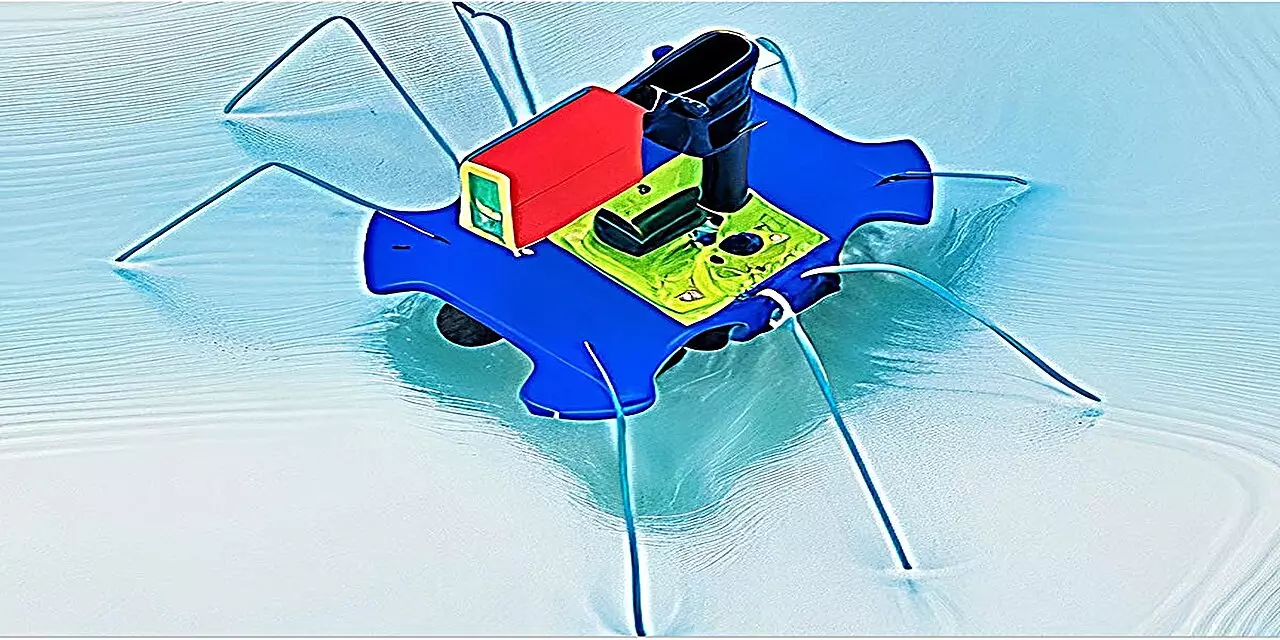Aquatic robotics have the potential to revolutionize various industries by providing valuable data from underwater environments. Researchers at Binghamton University, State University of New York, have developed a self-powered “bug” that can skim across the water, bringing us closer to the widespread use of autonomous aquatic robots. This breakthrough could significantly impact the field of aquatic robotics and open up new possibilities for data collection and analysis.
Futurists predict that by 2035, over one trillion autonomous nodes will be integrated into human activities as part of the “internet of things.” This integration will enable objects of all sizes to feed information to a central database without human intervention. However, a significant challenge lies in the fact that 71% of the Earth’s surface is covered in water, presenting environmental and logistical issues for the deployment of autonomous nodes in aquatic environments.
To address the challenges posed by aquatic environments, researchers at Binghamton University have created a self-powered aquatic robot using innovative technology. Professor Seokheun “Sean” Choi, along with Anwar Elhadad, Ph.D., and Ph.D. student Yang “Lexi” Gao, developed a bug-like robot powered by bacteria. This technology offers a more reliable power source under adverse conditions compared to traditional energy systems like solar, kinetic, or thermal energy.
Choi’s research focuses on bacteria-powered biobatteries with a potential 100-year shelf life. The self-powered bug utilizes a Janus interface that allows nutrients from the water to enter the device, fueling bacterial spore production. When conditions are favorable, the bacteria convert to vegetative cells, generating power. However, in unfavorable conditions, such as cold temperatures or nutrient scarcity, the bacteria revert to spores, prolonging the robot’s operational lifespan.
The self-powered bug generated approximately 1 milliwatt of power, sufficient to operate the robot’s mechanical movements and sensors. These sensors can track valuable environmental data, including water temperature, pollution levels, vessel and aircraft movements, and aquatic animal behavior. This real-time data collection could revolutionize environmental monitoring efforts and provide valuable insights into underwater ecosystems.
Moving forward, researchers aim to identify the most effective bacteria for energy production in challenging oceanic conditions. While common bacterial cells were utilized in the initial research, further studies are necessary to understand the microbial composition in different oceanic regions. The combination of multiple bacterial cells has shown promise in enhancing sustainability and power generation, paving the way for future advancements in self-powered aquatic robotics.
The development of self-powered aquatic robots represents a significant advancement in aquatic robotics technology. By harnessing bacteria-powered biobatteries, researchers have created a reliable and sustainable power source for underwater robots. This innovation has the potential to revolutionize environmental monitoring, data collection, and research efforts in aquatic environments, bringing us one step closer to a future where autonomous aquatic nodes play a crucial role in advancing our understanding of underwater ecosystems.


Leave a Reply